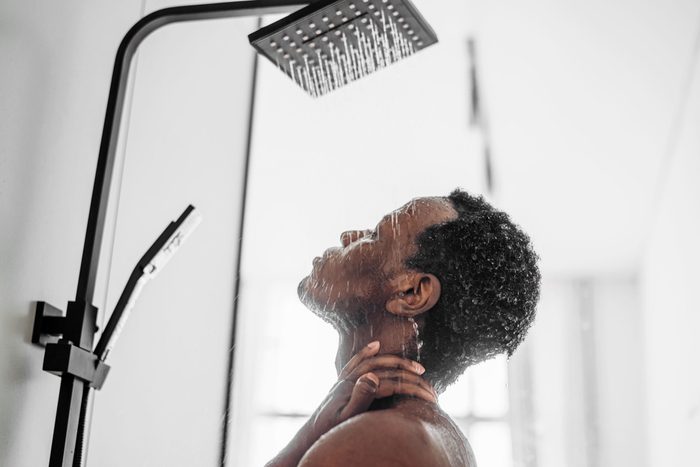
Whether you prefer a quick morning shower or a luxurious pre-bedtime soak, chances are your shower routine is so established that you haven’t put much thought into it in years. According to the Centers for Disease Control and Prevention (CDC), proper personal hygiene is the one of the best ways to keep yourself healthy. So, in the shower, it’s important to make sure you’re not just going through the motions—but really getting good and clean.
To help you scrub up on the right way to take a shower, The Healthy @Reader’s Digest rounded up the latest dermatologist tips and research.

Bathe most days
The American Academy of Dermatology recommends that kids over age 11 start showering or bathing every day. For younger kids, a couple times a week is usually enough unless they’re sweaty, dirty or have been playing in a pool or lake.
Two to three showers a week may be enough for many adults—but, if that’s not quite enough for you, that’s all good, too. Showering every day doesn’t appear to make skin dry or itchy.
Get The Healthy @Reader’s Digest newsletter
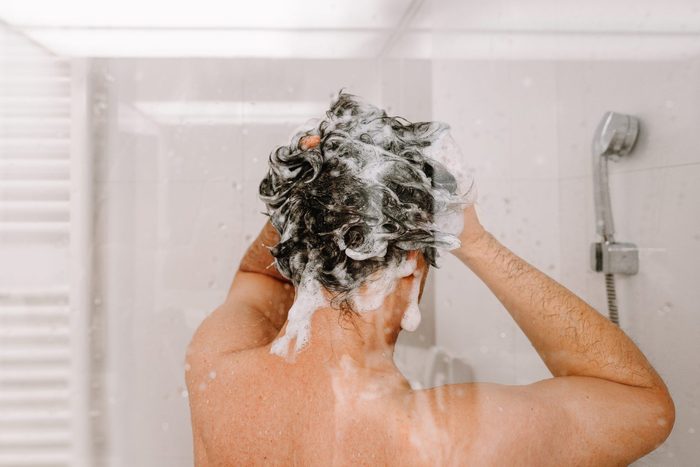
Wash hair less frequently
Most people can wash their hair less often than they bathe. How often you wash should be determined by your hair type and texture.
Hair naturally gets dryer with age, so many adults can wash their hair less often than teens. However, an oily feeling and flakes are signs it’s time to shampoo. Wash your hair by gently massaging shampoo on the scalp. Follow up by using conditioner on the entire length of your hair.

Close the door when you shower
Let your skin absorb moisture by closing the bathroom door while you shower. This keeps the humidity in the bathroom, building up steam so your body can soak in some extra moisture. After you’re finished showering, open a window or flip on the fan to pull remaining humidity out and prevent mold and mildew growth.
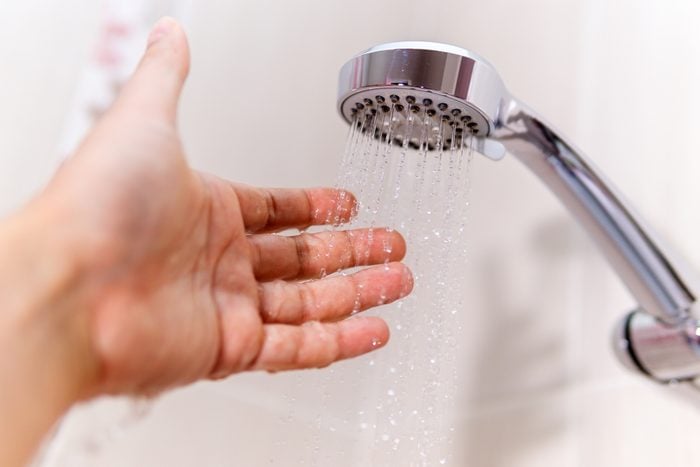
Find the right temp
The best temperature for your shower or bath water is your body’s natural temperature. You’ll know it when you don’t feel the temperature of the water, said Natalie Aguilar, dermatological nurse and aesthetician at N4 Skincare. Water that’s too hot can cause inflammation and immediate transepidermal water loss (TEWL), which one report in Applied Dermatoxicology defined as “the amount of water that passively evaporates through skin to the external environment due to water vapor pressure gradient on both sides of the skin barrier leads to dry, dehydrated and/or irritated skin.”
“Inflammation from hot water, as well as TEWL, can contribute to a variety of unwanted skin issues such as dryness, itchiness and a more pronounced appearance of fine lines and wrinkles,” Aguilar says.
The Difference Between Dry and Dehydrated Skin—and How to Treat Each

Keep it short
Lingering in a warm shower might feel luxurious, but it can also dry you out. Try to keep your time in the shower under 10 minutes to help your skin barrier stay hydrated. (This is also a good rule to cut down on water waste.)

Pick gentle products
Many dermatologists recommend gentle cleansers without added fragrance. No need to use too much, either. You don’t need enough bubbles to fill a tub to get clean—just use enough soap to clean any dirt and oil off your body.
Is Liquid Soap Better than Bar Soap? Here’s What Infectious Disease Experts Say
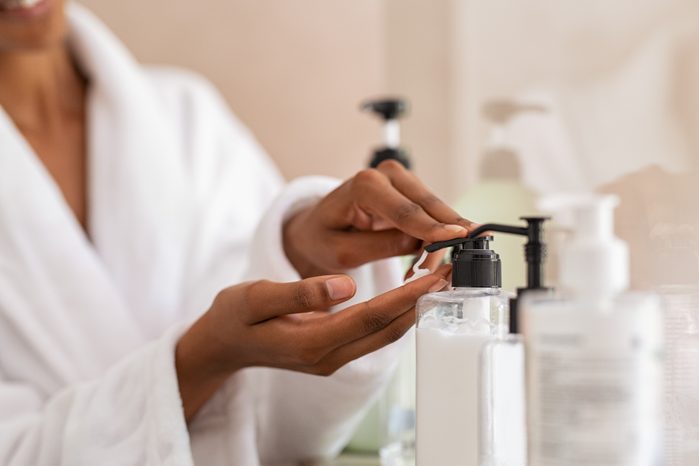
Don’t forget moisturizer
Lotion isn’t a special treat. It’s important to moisturize within three minutes following a shower or bath.
“Applying moisturizer after a shower or bath is crucial, as damp skin absorbs moisture better,” Aguilar says. “Your skin will be more receptive to the moisturizing qualities of body creams while it’s still damp.” And, this doctor says, that means following every daily scrub: “Consistency is key.”
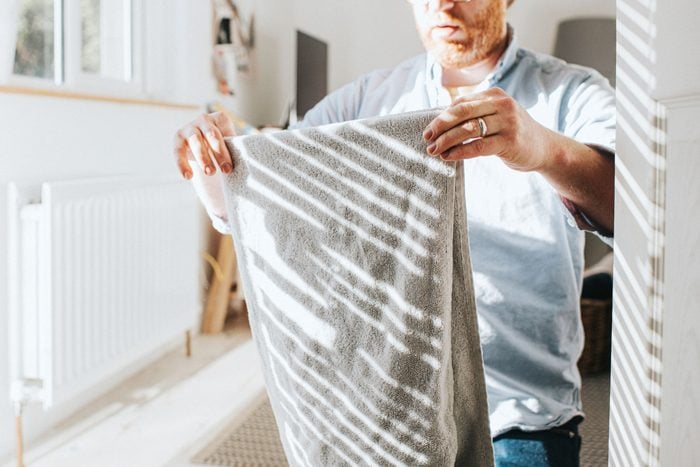
Launder with care
Choose a soft cotton towel that feels nice on your skin. Then launder it with care, Aguilar says, and skip heavy detergents. “Harsh detergents can irritate freshly bathed skin and can cause skin flares, especially to those who have eczema or psoriasis.”
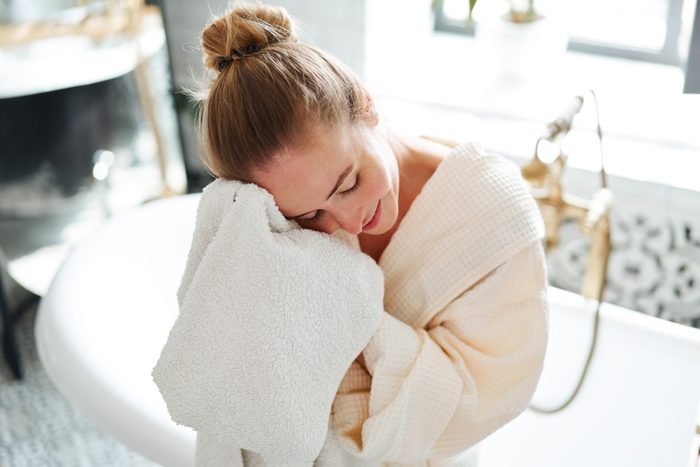
No need to be harsh
“It is also best to pat and rub gently using soft cotton towels,” Aguilar says. “Using towels that are hard or stiff can be too rough on skin.”
Take your time drying off. Rubbing your skin harshly or quickly with a towel is a common showering mistake.
For more wellness updates, follow The Healthy on Facebook, Instagram, and Twitter. Keep reading:
- Queen Elizabeth’s 10 Daily Habits That Helped Her Live 96 Years
- Having an Orgasm Can Improve Your Mental Health, a Brain Researcher Says
- Vanessa Lachey Gets Candid about Her Longtime Health Struggle…and the #1 Key to Her Marriage
- A UCLA Heart Doctor Just Shared the Age When Many Women’s Heart Disease Risk Increases
